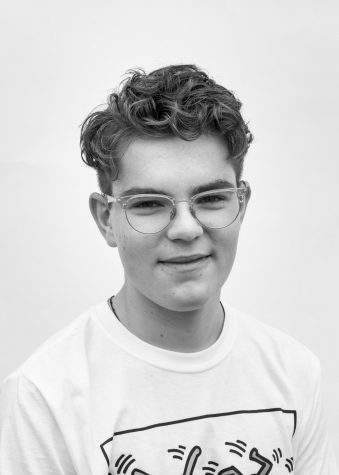Boston Youth Philharmonic Orchestra Students Perform at Symphony Hall
April 25, 2020
“The concert in Symphony Hall on March 12th was one of the highest points in the life of the Boston Philharmonic Orchestra; the reason it was so important was because it was the last live concert in Boston before the virus took over and Boston closed down.” These were the words of Benjamin Zander, a world-renowned musical director and conductor of the Boston Youth Philharmonic Orchestra.
The BPYO’s most recent concert was more than a simple performance by the 110-member orchestra. It was also a show of resilience to the world, to demonstrate the importance of music in people’s lives.
Uniquely, during this concert, Symphony Hall, one of the world’s most resonant venues and host to the major Boston Orchestras, was almost completely empty. The few spectators allowed into the hall were the few parents and friends of the orchestra members. Nevertheless, the experience was unforgettable, as Benjamin Zander recalled: “Nobody who was in that hall will ever forget the experience. We worked for months to prepare with a group of players of such dedication and we had worked so hard to put together such an extraordinary interpretation and performance of these two works.”
The performance began with Stravinsky’s first big hit, the ballet Petrushka. The Russian composer’s piece is one of the most difficult pieces in the classical music repertoire and is not typically a youth orchestra piece due to its complexity. The piece tells the story of the loves and jealousies of three puppets. The three are brought to life by the “Magician” in Saint Petersburg, Russia. The story is so intricate that the musicality and phrasing on it correlated with the historical and psychological state of the composer at the time. As Athena Aloupis ’23 recalls, “One of the main purposes of classical music is to embody the composer’s story, environment, emotions, and their backgrounds. The lack of understanding the composer and their message through their music is what I think perpetuates this notion that classical music is boring.”
The interpretation of the piece was magical, and the orchestra was on point in conveying the vividness and mood changes of the piece through impressive use of dynamics. The multiple characters of the ballet, embodied by the sounds of the different instruments, seemed to turn the hall into an 1830s St. Petersburg.
Most notable in the performance was the woodwind section; more specifically, the first flutists, the oboe section, and the first clarinetists. The juxtaposition of the different parts, especially during the competition between the two “street dancers,” was marked with solos from the above players that were apt and interpreted in an incredibly buoyant fashion. The piece was marked with the appearance of the puppet named Petrushka.
Throughout the ballet, Stravinsky identified Petrushka with a distinctive and slightly menacing chord, heard first in the clarinets. The “Petrushka chord” combines two triads (C major and F-sharp major). Played together, a tritone apart, they clash with striking dissonance. To conclude the ballet, a mysterious pizzicato phrase from the string sections marked the death of Petrushka.
Following the Petrushka was a rendering of Berlioz’s Symphonie Fantastique. The first movement begins with an introduction-like passage in C minor. The main body of the movement in C major is filled with passion and agitation. A special effect marks the beginning of the second movement in A major. Gradually, a waltz comes into being, which is quite similar to the airy start of Beethoven’s Ninth Symphony. Berlioz gave his introduction much-awaited excitement by means of both dynamics, a gradual crescendo, and pitch, a rising sequence of semitones. Since the successive semitones are equidistant, they give out a sense of instability—we don’t know where the ascent will end. The rustling effect in the strings is called tremolo and is created by bowing rapidly.
CRLS junior and bassoonist for the BPYO, Seth Goldman ’21, brought out the spirit of passion and dedication for the music that was treasured by every single BPYO player after the performance. Seth told the Register Forum, “I loved the challenge of being the dedicated contrabassoon player. Contrabassoon is like a ‘bass’ bassoon—it is an octave lower. On every piece that called for contrabassoon, I got to play it. This was my first time really playing contra and it was amazing. The weight and majesty that I can add to the piece is just aweing. If I become a professional bassoonist, I want to specialize in contra, and BPYO helped me realize this.”
This symphony was very demanding on its players and even more on its conductor. After all, it is the conductor’s responsibility to bring out the best in each player. Far too often, conductors lead from fear—they want to look good in the world—and if their orchestras do not play well, they think they’ll be misrepresented, so they drive the players to play better and better. However, in the words of the BPYO’s conductor Benjamin Zander, “That’s absolutely the wrong way around!” Zander believes that “the leader’s job is to bring out the best qualities in the players, to awaken possibility in others—the leader is the relentless architect of the possibility that others can be.”
In conclusion, the orchestra performed one of Elgar’s Enigma Variations, a slow and melodic piece in an exquisite manner. This was a perfect finishing point to the performance, beginning with a question, and ending with a warm chord. Even in the unusual circumstances, the world is in, music was able to surpass that on that night, and bring out a magical sense of wholeness that I feel every time I watch and re-watch recordings of the concert, leaving the audience with a good note.









